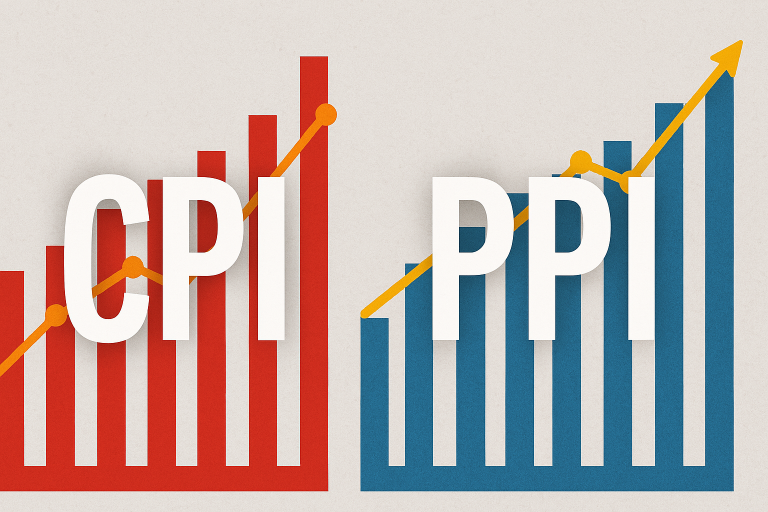Talk of tariffs has dominated the news recently. And rightfully so. There’s been so many developments, it’s hard to stay on top of everything.
Just consider some of the major developments from the past week…
- On Monday, the market rallied on rumors that the Trump administration would suspend tariffs for 90 days. The White House stated this was “fake news,” and the stock market abruptly reversed course.
- Automobile manufacturers halted shipments or held their shipments at the docks in response to the U.S.’s proposed 25% tariff on vehicle imports.
- Due to the reciprocal tariffs and concerns about slowing global growth, there was mania in the bond market. The 10-year Treasury yield swung from below 4.0% last week back to 4.5% on Wednesday to settle around 4.45% today.
- Crude oil prices plunged to four-year lows, with West Texas Intermediate (WTI) crude now around $60 per barrel.
- On Wednesday, President Trump shocked the world when he announced a 90-day reciprocal tariff pause that encompassed all of the U.S.’s trading partners with the exception of China.
- Let’s make a deal! More than 70 nations have reportedly contacted the White House and are ready to negotiate lower tariffs.
- The stock market staged a rally of historic proportions on Wednesday, with the S&P 500, Dow and NASDAQ surging 9.5%, 7.9% and 12.2%, respectively.
- The Trump administration increased its tariffs on China to 145% in response to China’s 84% tariffs on American goods. The escalating trade war drove another market reversal, with stocks erasing nearly half of Wednesday’s gains in Thursday trading.
- On Friday, China said it will raise tariffs on U.S. goods to 125%, up from the 84% previously planned, effective Saturday.
That’s a lot of news, folks. But lost in all the drama this week was the fact that we received the latest batch of inflation reports: the Consumer Price Index (CPI) and the Producer Price Index (PPI).
These are especially important right now, as they will likely be the last readings before we see the impact of the tariffs in the numbers.
So, in today’s Market 360, let’s take a look at what the CPI and PPI are telling us – and what that means for the market and the likelihood of key interest rate cuts. And finally, I’ll wrap things up by telling you about another financial event that’s set to throw the markets into turmoil – and how you can prepare.
Consumer Price Index
On Thursday, the CPI report came in better than expected. Prices fell 0.1% in March, which beat expectations for a 0.1% rise. I should also point out that this was the first time the monthly CPI has fallen since May 2020. On an annual basis, prices increased 2.4%, below February’s 2.8% annual gain and economists’ expectations for a 2.6% rise.
Core CPI, which excludes food and energy, showed a 0.1% increase over the prior month, besting February’s 0.2% monthly gain. On an annual basis, core CPI went up 2.8% over last year. That’s down from 3.1% in February.

Digging into the details, energy prices declined by 2.4%, and gasoline prices plunged 6.3%. There were also declines in categories such as airline fares and vehicle insurance, as well as used cars and trucks.
Meanwhile, the food index rose 0.4% in March and 3% year-over-year. This was primarily driven by the 5.9% increase for eggs. Additionally, food for home rose 2.4% over the last 12 months while food away from home increased 3.8% over the last year.
Food wasn’t the only index that saw an increase for the month, however. Medical care, clothes and new vehicles were all higher in March.
The biggest piece of this report for me was owners’ equivalent rent, or shelter costs. Following February’s slight rise of 0.3%, the index is back up, rising 0.4% in March. That marks the smallest monthly increase since November 2021. This is a very positive sign since housing costs have been the biggest problem in the CPI reports lately.
Producer Price Index
Friday’s PPI report showed that wholesale inflation is cooling off. The PPI fell 0.4% in March, compared to expectations for a 0.2% increase and February’s 0.1% rise. This marks the largest drop since last October.
Excluding food and energy, “core” PPI decreased 0.1%. Economists were looking for a 0.3% rise. This brings the annual increase to 3.3%, its lowest rate since last September.

Diving deeper, 70% of the decrease for March can be traced to the index for goods, which fell 0.9%. This was the index’s largest decrease since October 2023. The biggest impact on this index was the 11.1% drop in prices for gasoline.
Goods prices, excluding food and energy, rose 0.3% in March. This is the second monthly increase and marks the biggest two-month increase in two years. Service prices, meanwhile, fell 0.2% in March, the largest decline since July 2024.
What This Means for the Fed
The good news? Both reports show easing inflation.
The bad news? I wouldn’t read too much into either of these reports. The CPI report, in particular, was welcome news – and I’m especially glad to see shelter costs finally cooling.
But the fact is that next month’s reports are a significant wildcard. And until we have those numbers, it is hard to judge how important this month’s reports are – or what the Fed is going to do next.
That being said, I do think these reports could coax the Federal Reserve to cut rates in either May or June. And while the bond market is clearly going through some oscillations right now, I expect things to calm down and for market rates to meander lower.
I’m also still firmly in the camp that we will be getting at least four rate cuts this year. That’s because global interest rates are headed lower. Much of the world is in bad economic shape right now – much worse than us. And because of that, global central banks will be cutting their key interest rates.
Eventually, the Fed will follow in their footsteps.
Another Event on the Horizon
Currently, folks are in a tariff-triggered frenzy. But I want to urge you to remain calm. The fact is the U.S. is an oasis compared to the rest of the world. We are demographically superior, our states naturally compete with each other, we assimilate our immigrants, and our rate of innovation and entrepreneurship is unparalleled.
And for that reason, we are poised to remain the world’s growth engine.
So, I want you to keep your eye on the ball. Because the fact is, thanks to the AI Revolution, a massive wave is on the horizon – and many don’t even see it coming…
It’s so serious that I call it a financial tsunami.
When this tidal wave makes landfall, its impact will be more violent and more severe than any financial crisis we’ve ever seen. Hundreds of millions of American livelihoods – including my own – are in danger of being wiped out.
But it will also create an unimaginable amount of wealth.
As someone who has been in the investing world for more than 40 years, I’m one of the few people who actually knows what’s coming… and how to prepare for it.
That’s why I’ve created this free special presentation to share with you everything you need to prepare – and profit – from this unstoppable force.
Whether you’ve managed to save $10,000 or $10 million, this information could prove essential to your financial survival. And since the countdown has already begun, time is running short.
Click here to watch my special presentation now.
Sincerely,

Louis Navellier
Editor, Market 360

